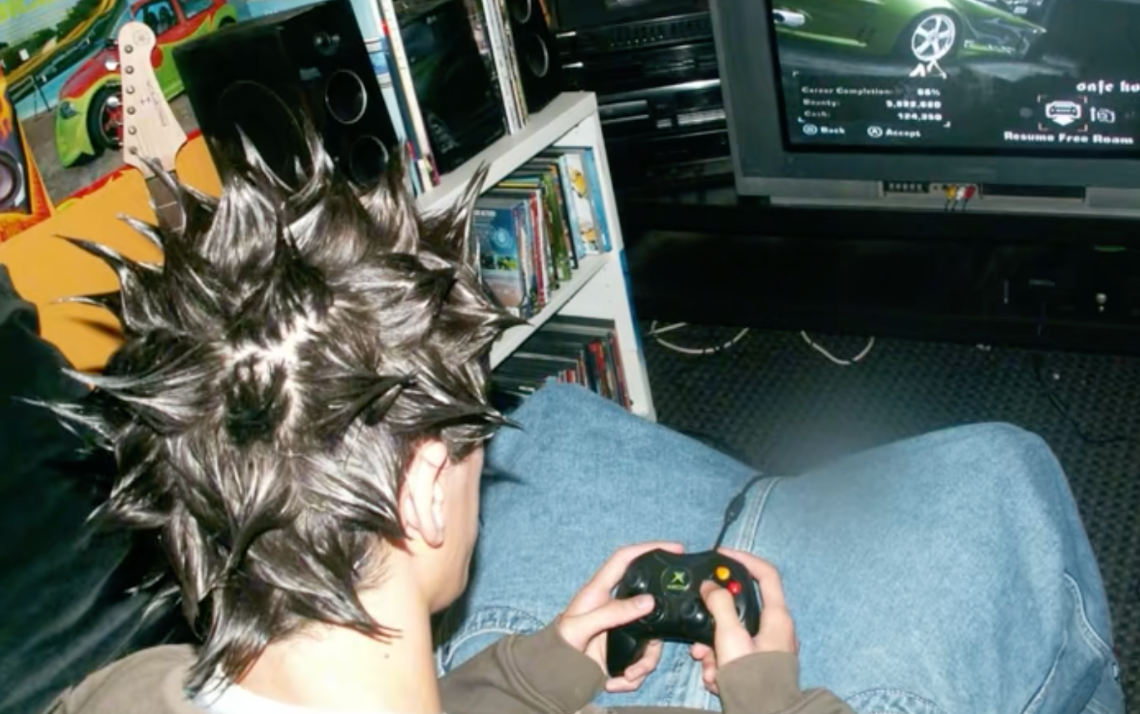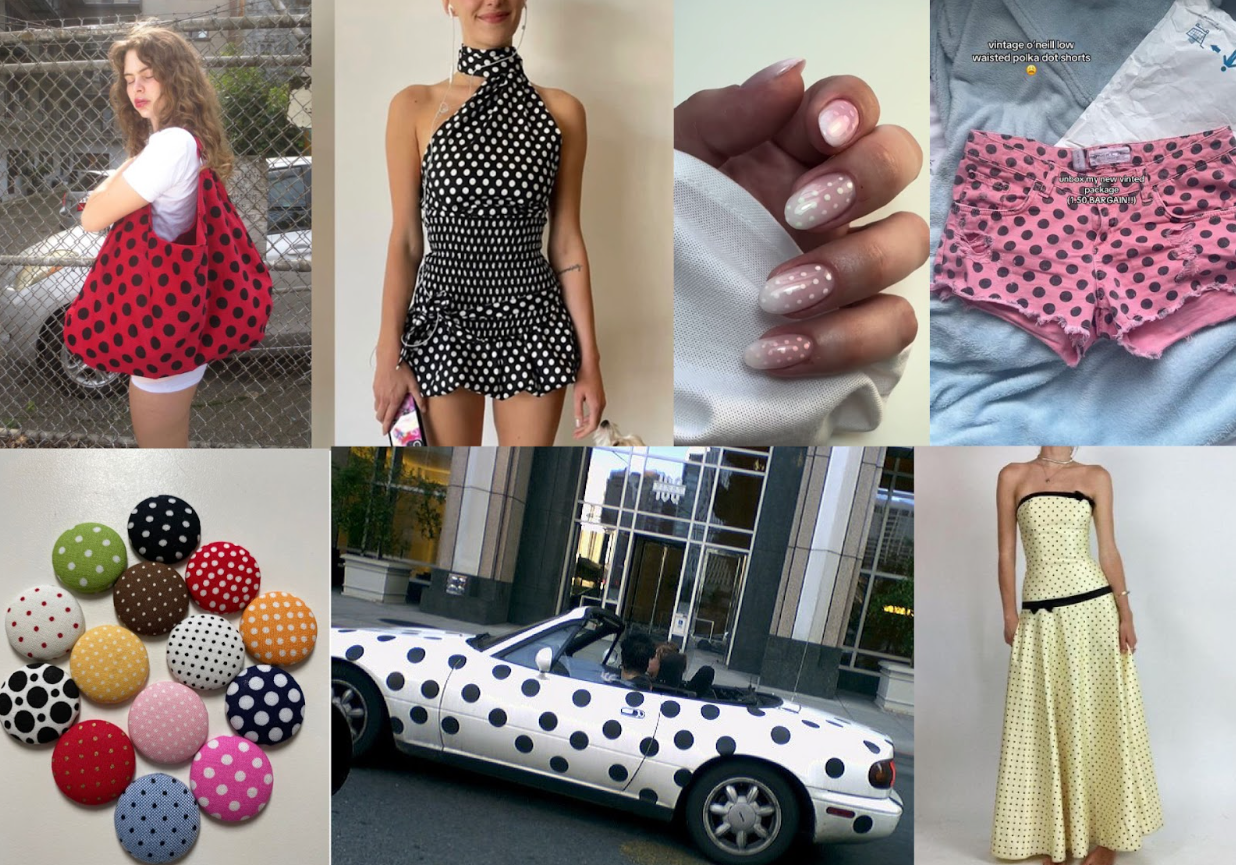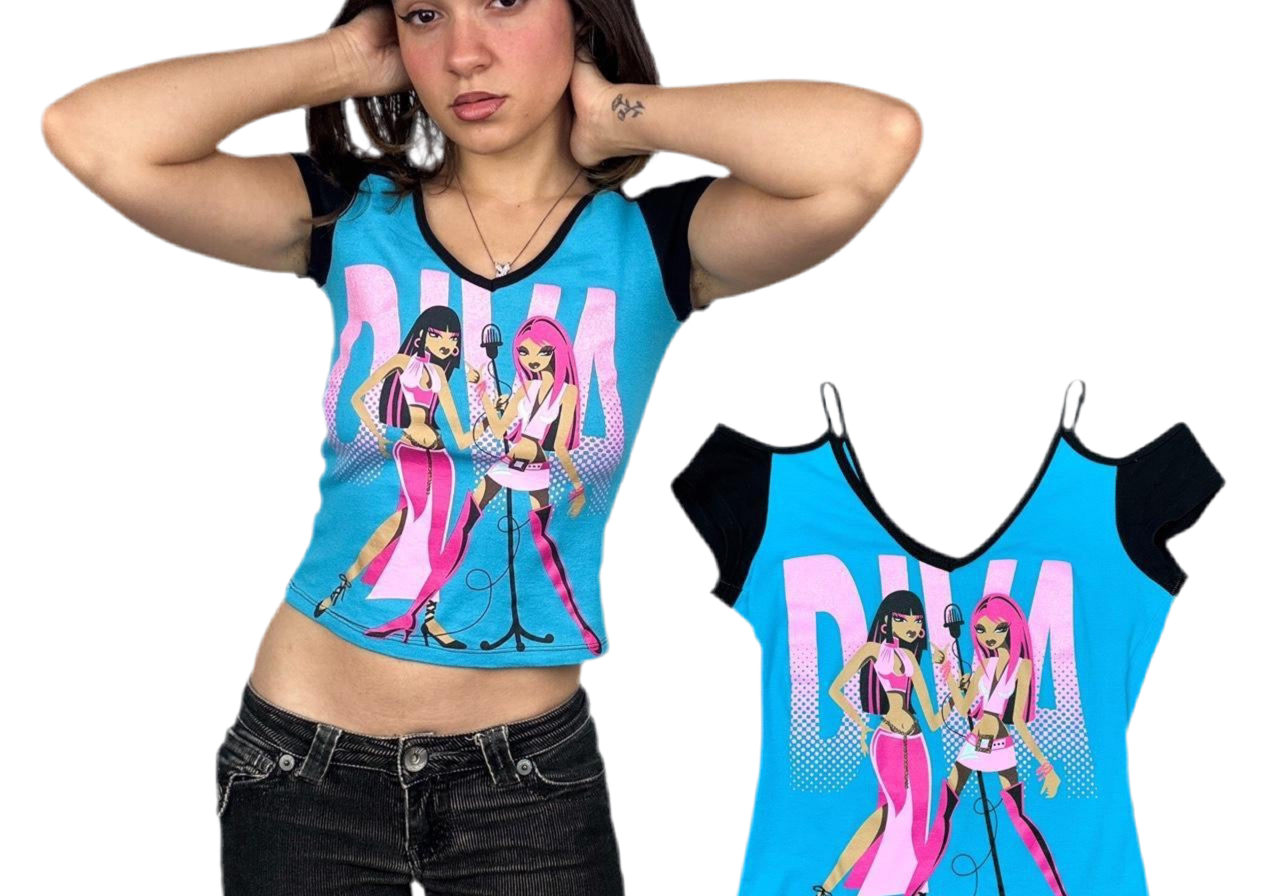Olderbrothercore is the New McBling

If there’s one thing that Gen Z can agree on, it’s their unquenchable thirst for 2000s nostalgia. Just this week, Hollister released a long-awaited 2000s collection from the “vault” for consumers to shop, making it yet another major retailer to cash in on the Y2K craze.
Craze, actually, may be an understatement. It’s hard to keep up with all the nostalgia lately — especially when it seems to be everywhere. Miley Cyrus is hinting that a Hannah Montana concert may be in the works, and “animals” attending the viral Tits Out Tour are donning Kesha-with-a-dollar-sign inspired looks. Oh, and apparently Ross is selling High School Musical blankets?
In other words, this month has been a trip down memory lane for the girls who are grieving the adulthoods television promised them: a flashy future including flip phones, belly button piercings and plenty of house parties. Gen Z has given this reality a name: McBling, a term originally coined to redefine “trashy Y2K” aesthetics, but has now been co-opted by the internet to mean girly 2000s things.
Well … what about boyish 2000s things? That’s what the quiet corners of TikTok have begun to romanticize. The “gender envy” hashtag has raked up thousands of views as of late, mostly emphasizing the female urge to be a rowdy teenage boy of the 2000s. Reese from Malcolm in the Middle has become the unofficial face of this aesthetic — an aesthetic that has been conveniently dubbed Olderbrothercore.
The term has been around for a little over a year, but its popularity has ebbed and flowed against the roar of McBling-inspired fashion trends. Some people are tapping into their boyish 2000s energy through thrifted JNCO jeans, Adidas sweatshirts, and Osiris sneakers. Others simply want to embrace the lifestyle of a 2000s boy.
Olderbrothercore appears superficial on the surface, steeped in traditional masculinity and rebellion. But people of all gender identities are relating to it — celebrating its defiant attitude.
It’s a blend of different teenage boy behaviors and subcultures: a nerd, a troublemaker, and a popular guy. Olderbrothercore is wearing a baseball hat backwards and blasting “My Own Worst Enemy” from a messy bedroom. It’s neon green Xbox cases and neon green Mountain Dew bottles. It’s 7/11 slushies, spiky hair, and throwing up middle fingers at authority. In its simplest form, Olderbrothercore is about embracing one’s angst, which teenage boys seem to wear loud and proud.
If you had an older brother in the 2000s — or maybe you are the older brother reading this — this aesthetic will hit you in your feels. Admirers of the trend are rummaging through thrift bins for band tees, layered shirts, beanies, converse sneakers, basketball shorts and fur trimmed hoodies. Bonus points if the clothes have a graphic print featuring superheroes, stars, boom boxes, and other vague “boy” iconography from the era.
Megan Fox once had a habit of stealing her son’s shirts and wearing them out in Los Angeles. This trend is not quite as effortlessly chic as that example, but it’s a good place to start if you’re curious about venturing into Olderbrothercore.
People taking part in the trend find it incredibly easy to pull off since there is no clear-cut limitation on what is Olderbrothercore. It can be as masculine or unmasculine as you wish, focusing on the nerd element, the rockstar element, or the skate punk element.
Maybe your older brother was all of these things, a mish-mash of skateboarding and graffiti. A hybrid of puca-shell necklaces, hidden report cards, and cold pizza for breakfast. Whatever he was (or whoever you wished him to be) is the inspiration for this look.
If you’re still confused, just think of Rodrick Heffley: the unruly teenage brother to Greg in Diary of a Wimpy Kid. Rodrick is unapologetically rude to everyone, constantly playing mean pranks on his siblings. He drives around town in a van that says Löded Diper on its side, which happens to be the name of his not-so-popular rock band. He’s also lazy — shirking his responsibilities at work, school, and home. By all means, we should dislike him — but there’s something about his less-than-kind demeanor that we all secretly love.
I find that admiration particularly interesting: how teenage boy angst is celebrated and teenage girl angst is not. From a young age, women are told to be ladylike: to keep their composure, to keep curse words out of their vocabulary, to sit up straight and listen even when they are riddled with anger. But now and then, who doesn’t want to flip someone the bird and scream out the lyrics to “Break Stuff” by Limp Bizkit? Or chug Monster energy drinks like a lunatic and do donuts in the parking lot?
Olderbrothercore has a little something to offer everyone. It’s allowing people to slip through the sliding glass doors of gender norms and self expression, wearing their angst loud and proud. Anyone can have fun with it because it’s an opportunity to access a teenaged-self that’s been buried under responsibilities and time.
As for myself, I don’t have an older brother. But I wanted to have one really bad. I wanted him to kick ass on Guitar Hero and skate like Tony Hawk. I wanted him to have a navy blue bedroom that I was not allowed to enter. I wanted him to drive a champagne Honda Accord and take me to the Wendy’s drive-thru for frosties when I was having a bad day.
He didn’t (and could never) exist, but I found him in myself. I carried this invented brother with me to the mall, buying beanies and CDs when I could afford it. I headbanged to heavy metal in the car and rode my Heelys around the driveway. And when my little brother grew a bit older, I realized that he might have been here the whole time.
This trend is for anyone who has ever wanted to break stuff. So go break stuff … just not at the thrift store.
10 comments
-
* * * No mining, no trading - just free Bitcoin in 1 tap: http://uwiapartment.com/index.php?avzw7g * * * hs=56f2e7b47bc5fc5197a182d1cebc5c66* ххх* on
dzb5v0
-
🖥 ⚠️ Critical - 1.3 Bitcoin transfer canceled. Resend here > https://graph.org/Get-your-BTC-09-04?hs=56f2e7b47bc5fc5197a182d1cebc5c66& 🖥 on
wq6k25
-
💽 💲 Crypto Deposit - 1.75 BTC awaiting. Withdraw here → https://graph.org/Get-your-BTC-09-04?hs=56f2e7b47bc5fc5197a182d1cebc5c66& 💽 on
jrfbnc
-
📘 🔷 Incoming Deposit: 1.8 BTC from unknown sender. Review? => https://graph.org/REDEEM-BTC-07-23?hs=56f2e7b47bc5fc5197a182d1cebc5c66& 📘 on
o575jd




dzb5v0